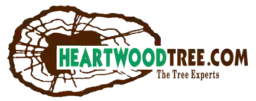CALL TO MEET WITH AN ARBORIST
704.525.3066 Charlotte
828.231.6008 Asheville
704.892.8927 Lake Norman
Wood Boring Insects
Wood-boring insects are among the most destructive pests of ornamental trees and shrubs. Most borers are the larvae (immature stages) of certain moths and beetles. They tunnel and feed under the bark in living wood, destroying water and sap-conducting tissues. This causes girdling, branch dieback, structural weakness, and decline and eventual death of susceptible plants. Infestation sites also provide entry points for plant pathogens. Depending upon the species,
Infestation and Damage
Borers rarely infest healthy plants growing in their natural environments. However, when trees or shrubs are transplanted into the landscape, stresses such as drought, soil compaction, sun scald, or injuries can weaken them and make them more susceptible to attack. Adults may locate suitable egg-laying sites by responding to volatile chemicals that emanate from stressed trees. Adult borers emerge from infested trees in the spring or summer. After mating, the females fly to a suitable host and lay eggs on the bark, often in crevices or around wounds. Hatching occurs about 10 days to 2 weeks later. The young larvae quickly tunnel beneath the bark where they feed and grow. Once inside the tree, borer larvae are no longer vulnerable to insecticide sprays and are seldom detected until serious damage has been done. Several species of borers can infest landscape plants. While some are attracted to a range of hosts, most attack only certain kinds of trees and shrubs. It is important to know when the adults of each species are active and which plants are vulnerable in order for treatment to be effective.
Peachtree borer and lesser peachtree borer are pests of peach, plum, cherry, and other Prunus species, including both fruit and ornamental varieties. Peachtree borer larvae attack mainly young trees, feeding under the bark from the root crown to about 2 feet above ground level. The lesser peachtree borer prefers older trees, infesting the upper trunk and main branches, often around wounds, cankers, or other damaged areas. Infestation sites are marked by accumulations of brown grass mixed with sap and gum.
Dogwood borer prefers flowering dogwood (Cornus florida) as its host. Infestations in young trees usually occur in the main trunk, often around lawn mower injuries. Infestations in older trees are likely to be higher up in limb crotches or main limbs and associated with pruning scars, cankers, or cracked bark. Dogwood trees planted in the sun are more susceptible than trees in the shade. Symptoms include dieback of branches and coarse, sawdust-like frass expelled from cracks in the bark. This insect species is widely distributed wherever dogwoods are cultivated.
Southern pine beetles become active in the spring about the time redbuds and dogwoods bloom. Pairs of southern pine beetles attack weakened and lightening damaged pine trees. If the tree has enough sap, a pitch tube forms at the entrance hole. The pitch tube is usually white and about the size of an average piece of popcorn. The beetles and their grubs feed on phloem tissue just under the bark. Females emit an aggregation pheromone that attracts males and more females to the tree. This pheromone, in conjunction with resin odors released by the attack points, attracts even more beetles to the tree. From the first tree they may spread to stressed but otherwise healthy trees nearby. The beetles invade the tree’s main stem and thousands of pairs may attack a single tree. They usually attack the middle and upper trunk first. Each pair excavates a winding serpentine tunnel about a foot long between the bark and wood. The tunnels crisscross to form an intricate pattern that girdles the tree. Eggs are deposited in niches along these tunnels.
Zimmerman pine moth has long been a pest of pines but has become increasingly noticeable in the past few years. The larva of this moth species is a borer that attacks pine tree trunks and lateral branches. Trees rarely are killed by this insect but they are disfigured as branches die. Borer damage can weaken trees and cause trunks or branches to break off during heavy ice, snow or wind. Infestation is determined by the presence of resin or pitch masses on the tree trunks where the larvae are feeding beneath the bark. Pitch masses may be 2 to 4 inches in diameter and are usually located at branch whorls where the branches join the main trunk. Fresh pitch masses where the larvae are active will be white, soft, and shiny. Zimmerman pine moths are most vulnerable to controls when larvae are active and exposed on the bark in spring and late summer.

GET LIVE UPDATES FROM HEARTWOOD TREE
Stay current with the updates, newsletter and our event schedule. We are passionate about increasing awareness about the diminishing canopy coverage of our planet and we’re always staying involved to continue to be a part of the solution.

